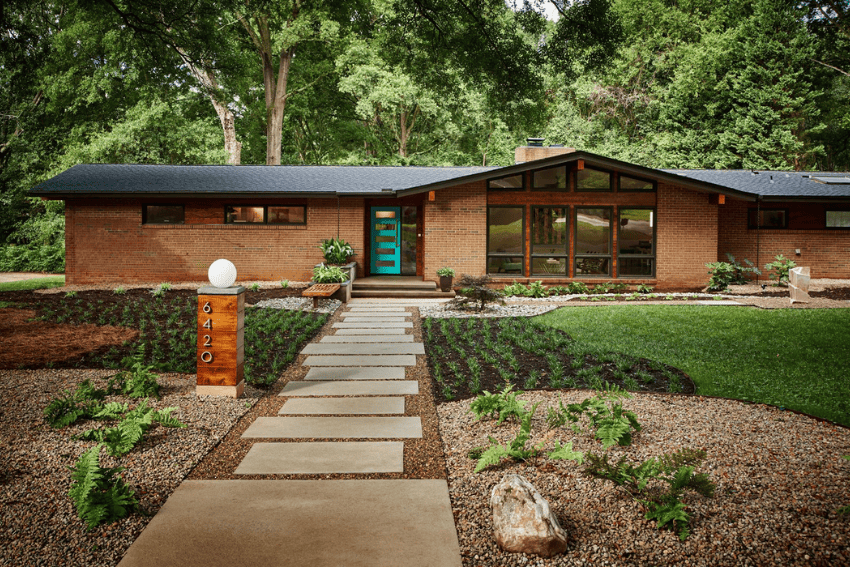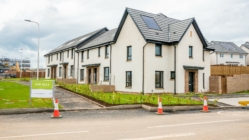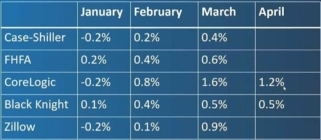
Shadow Inventory Will Kill Us All!
In 2012, housing analysts were terrified of the dreaded shadow inventory! Estimated to be as high as 10 million homes, it was all of the homes that were seriously delinquent or in foreclosure and soon to be taken over by banks only to be sold shortly thereafter.
Analysts were convinced that this mighty wave of inventory from banks would swamp the market and crash prices to new lows.
AND… AND… it never happened.
Not even close, but that did not stop the fearmongers from finding new reasons to predict a housing collapse.
This is a point HousingWire’s Logan Mohtashami makes often, including in this recent article: Why Higher Rates Did NOT Crash the Housing Market – The Housing Bubble Boys Got It Wrong Again.
False Predictions of Doom Keep Buyers on Sidelines
In that article, Logan set out the below list of the 12 heavily predicted crashes that never manifested – and I remember them all, as they ALL kept buyers on the sidelines for no reason and at great expense.
- 2012 – Shadow inventory
- 2013 – Higher mortgage rates
- 2014 – QE ending in October
- 2015 – Manufacturing recession
- 2016 – Home prices got back to the bubble high
- 2017 – No good reason – but darn it, the market’s gonna crash!
- 2018 – 5% mortgage rates (Start of the bubble crash for sure)
- 2019 – Home-price growth was cooling off
- 2020 – COVID-19
- 2021 – Mortgage forbearance
- 2022 – 7% mortgage rates
- 2023 – Historically low housing demand
COVID-19 was another time pundits were all but certain the market would crash, and man did I get a lot of pushback when I was making the case that the market would hold – and hold it did (and then some 😊).
Why Did Higher Rates Not Crash the Market?
There are several reasons, as most readers know, but there is one reason I had not thought of that will surprise everyone.
- CRAZY TIGHT INVENTORY. Duh. Everyone knows this by now, but I list the main factors behind this in any case.
-
- Builders building at much slower pace than they did prior to 2008;
- No foreclosures to goose inventory because underwriting standards have been so much stricter; and
- Mortgage Rate Lockdowns – where sellers do not want to sell if doing so will force them to buy in a high-rate environment.
- CRAZY HIGH DEMAND. This was the bigger surprise, and I will list some of the reasons why demand remained so strong despite the fastest increase in rates in history.
-
- Homebuying demographics peaked. The number of Americans hitting peak homebuying age (early 30s) hit a record high. This is in sharp contrast to 2008, when that demographic hit a record low.
- Household formations exceeded new home construction. This is a point Barry Habib makes often, reminding us that the number of new households getting formed (from kids moving out, getting married, etc.) has been dwarfing the number of new homes getting built for years now – fostering a major single-family home shortage.
- Mortgage rate buydowns. This is a factor that didn’t occur to me, and it was a point that was made recently by “The Uneducated Economist” on YouTube (it is also a great example of capitalism at work). The mortgage industry quickly figured out how to mitigate the pain of higher rates and payments by offering very effective interest rate buydowns – both permanent and temporary – that were largely unavailable or out of the picture when rates were very low.
Anyway – I will repeat the point I made above: These constant predictions of housing doom and gloom keep buyers on the sidelines at great expense to those buyers because when they do finally get in the game, prices are invariably higher.
Hence, readers might want to share this blog with any of their nervous clients – as per usual.
Jay Voorhees
Founder | JVM Lending
(855) 855-4491 | DRE# 1197176, NMLS# 310167












